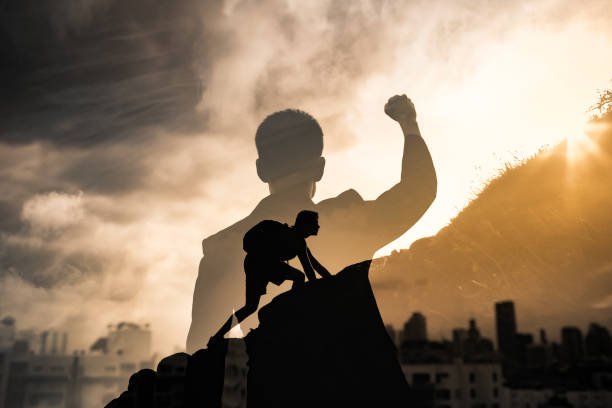Imagine this: you’re halfway up a muddy trail in the Costa Rican cloud forest, the mist is thick, and a sudden downpour begins. Or maybe you’re navigating the chaotic symphony of a Marrakech souk, jostling through the crowd. In these moments, the last thing you want to worry about is your backpack failing. A snapped strap, a broken zipper, or soaked gear can turn an epic adventure into a frustrating ordeal.
Your backpack isn’t just a bag. It’s your mobile command center, your portable home, and your most trusted companion on the road. For the adventurous soul, choosing a backpack is a declaration of intent. It says you’re ready for whatever the world throws at you. A flimsy, department-store bag just won’t cut it when you’re pushing boundaries and creating stories.
That’s why we’ve gone deep, curating a definitive list of 10 truly rugged travel backpacks. These packs are forged for the unforgiving path. They’re built with bombproof materials, engineered for ergonomic comfort, and packed with smart features that real travelers demand. Forget flimsy and unreliable; it’s time to gear up with a backpack that has your back, every single step of the way.
Let’s dive into the unbreakable travel companions that will elevate your adventures from good to legendary.
1. The Indestructible All-Rounder: GORUCK GR1
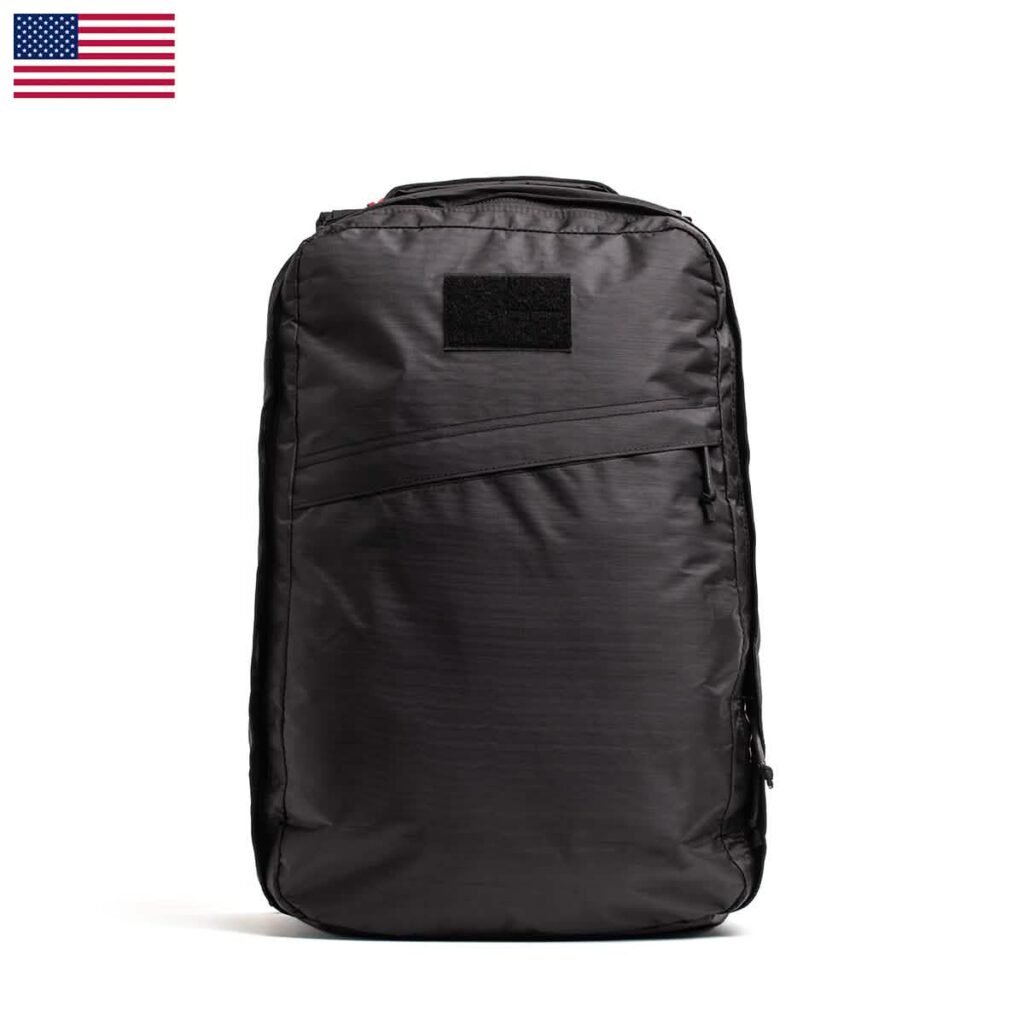
When the conversation turns to pure, unadulterated toughness, the GORUCK GR1 is often the first and last word. Born from the crucible of Special Forces training, this backpack is less a piece of luggage and more a piece of equipment. It’s built to a standard, not a price point, and that standard is “bombproof.”
Constructed from 1000D Cordura® nylon, a material renowned for its extreme resistance to abrasion and tears, the GR1 feels ridiculously overbuilt in the best way possible. The YKK zippers are so beefy they could probably tow a small car. This pack is designed to be dragged, dropped, and abused for years, and then ask for more. GORUCK is so confident in its durability that it comes with their SCARS Lifetime Guarantee.
What makes it so versatile is its brilliant simplicity. The GR1 opens flat in a clamshell design, making packing and accessing your gear incredibly easy—no more digging blindly into a top-loading abyss. The star of the show is the heavily padded, false-bottom laptop compartment, which is fortified to withstand serious impacts, keeping your tech safe. External and internal MOLLE webbing allows for endless customization with additional pouches.
- Best For: The “buy it for life” traveler, digital nomads who need ultimate laptop protection, and anyone who values supreme durability over complex organization.
- Capacity: Available in 21L and 26L.
- Pros: Virtually indestructible, SCARS lifetime guarantee, opens flat for easy packing, bombproof laptop compartment.
- Cons: Expensive, heavy for its size, internal organization is minimalist without add-ons.
2. The Weather Warrior: Patagonia Black Hole Pack 32L

For adventurers who frequently dance with the elements, the Patagonia Black Hole Pack is a shining beacon of dry-gear hope. Its name comes from the seemingly endless space in its main compartment, but its true superpower is its incredible weather resistance.
The pack is made from a tough, 100% recycled polyester ripstop fabric, but the magic is in the glossy, highly weather-resistant TPU-film laminate. While not fully submersible, this material will shed a torrential downpour with ease, keeping your clothes, electronics, and snacks perfectly dry. It’s the kind of peace of mind you need when the sky opens up in the middle of nowhere.
Functionality is pure Patagonia: simple, effective, and eco-conscious. A padded sleeve holds a 15″ laptop or a hydration reservoir, and a zippered top pocket keeps small essentials handy. The external daisy chain webbing is perfect for clipping on a water bottle, sandals, or a wet rain jacket. The air-mesh back panel provides comfort and ventilation on hot, humid treks.
- Best For: Travelers heading to rainy destinations like Southeast Asia or the Pacific Northwest, water-based activities, and eco-conscious adventurers.
- Capacity: 32L (other sizes available).
- Pros: Highly water-resistant, made from 100% recycled materials, durable, versatile for city and trail.
- Cons: The shiny material isn’t for everyone, internal organization is fairly basic.
3. The Minimalist Beast: AER Travel Pack 3 Small

Who says rugged has to look messy? The AER Travel Pack 3 Small is the epitome of sleek, minimalist design fused with tank-like construction. This bag is for the efficient traveler who wants to move seamlessly from the airplane cabin to a business meeting to a weekend hike, all while looking sharp.
Don’t let its clean exterior fool you; this pack is a beast. It’s crafted from 1680D Cordura® ballistic nylon, a fabric originally developed for military body armor. It’s tough, abrasion-resistant, and built to handle the rigors of daily use and constant travel. Every stitch, strap, and zipper feels premium and purposeful.
Where the AER truly excels is its genius-level organization. It features a lay-flat main compartment for your clothes, a separate, heavily-padded tech compartment for your laptop and accessories, and a quick-access top pocket for your passport and keys. It even has a shoe garage to keep your dirty boots separate from your clean shirts. It’s the perfect pack for the hyper-organized adventurer.
- Best For: One-bag travelers, digital nomads, and urban explorers who demand both style and substance.
- Capacity: 28L.
- Pros: Incredible organization, premium build quality, sleek and professional look, carry-on compliant.
- Cons: Can get heavy when fully packed, might be too structured for some.
4. The Adventure Photographer’s Fortress: Peak Design Everyday Backpack V2
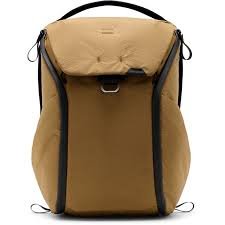
Photographers know the anxiety of traveling with thousands of dollars of fragile glass and electronics. The Peak Design Everyday Backpack is designed to eliminate that fear. It’s a masterclass in accessibility, customizability, and protection, all wrapped in a stunningly rugged and weatherproof package.
The shell is a 100% recycled 400D nylon canvas, treated with a DWR coating to fend off water. But the real innovation is inside. Instead of standard foam dividers, the pack uses origami-inspired FlexFold dividers that can be configured in endless ways to cradle your camera bodies, lenses, and drones securely.
Access is king here. The patented MagLatch hardware allows for quick, one-handed, and secure top access. Dual side-access panels let you grab your camera without ever taking the bag fully off your back—perfect for capturing those fleeting moments. It’s more than a backpack; it’s a mobile studio designed for the field.
- Best For: Travel photographers and videographers (from amateur to pro), tech-heavy travelers.
- Capacity: Available in 20L and 30L.
- Pros: Unmatched gear accessibility and protection, highly customizable interior, weatherproof, sleek design.
- Cons: Premium price point, can be complex to set up initially.
5. The Urban Explorer’s Shield: Thule Subterra 34L
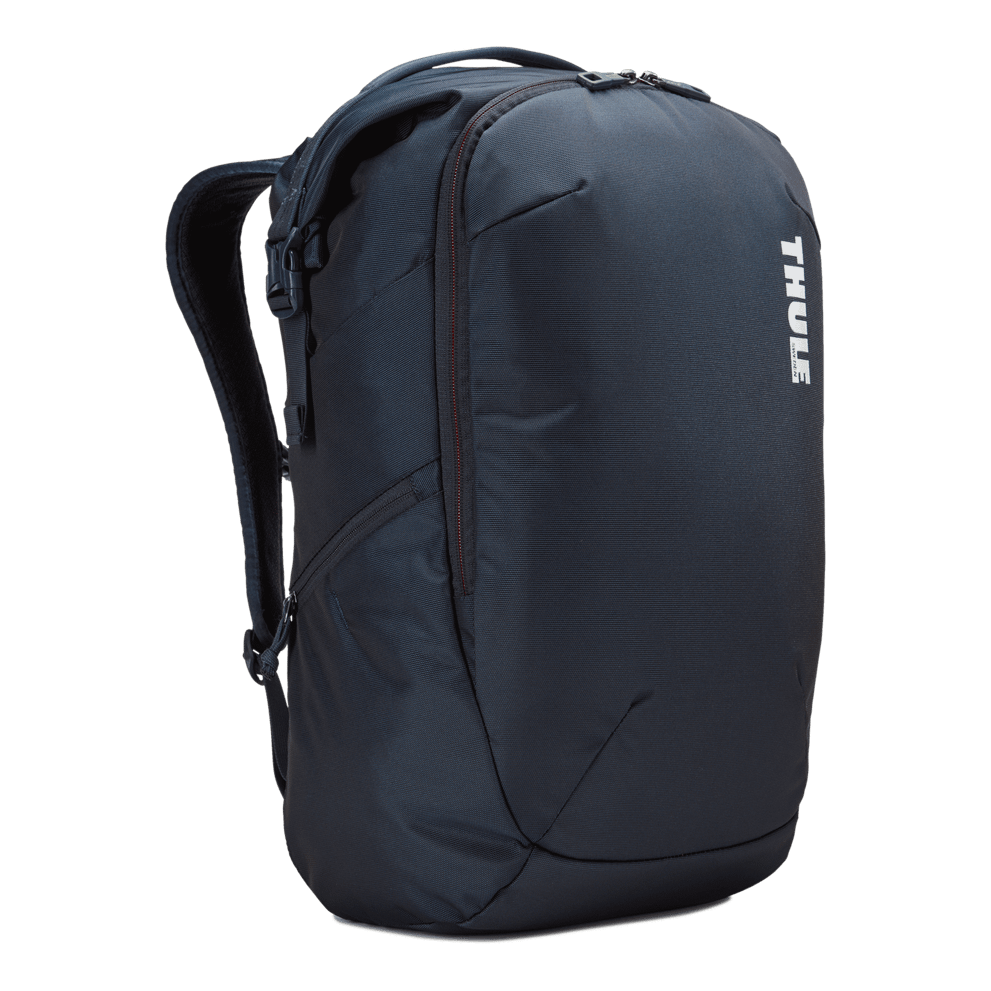
Navigating a sprawling metropolis is its own kind of adventure, requiring a backpack that is both tough and smart. The Thule Subterra 34L is an urban warrior’s dream, blending Scandinavian design with rugged functionality to protect your gear in the concrete jungle.
Thule knows how to build durable gear, and this pack is no exception, using tough 800D nylon. It’s designed to handle the daily grind of commutes, crowded subways, and airport security lines. Its standout feature is the clever packing cube that can be used inside the bag or removed, giving you a two-in-one system for organizing your clothes.
Tech protection is paramount. The Subterra features a padded laptop sleeve with SafeEdge construction for corner protection, plus a separate padded tablet sleeve. A crushproof SafeZone compartment is perfect for protecting sunglasses, a phone, or other fragile items. It’s a mobile fortress for your digital life.
- Best For: Business travelers, urban explorers, students who need robust protection for their electronics.
- Capacity: 34L.
- Pros: Excellent tech protection, removable packing cube, durable materials, sleek profile.
- Cons: Heavier than some competitors, the packing cube reduces main compartment space.
6. The Backcountry Bruiser: Osprey Aether 65
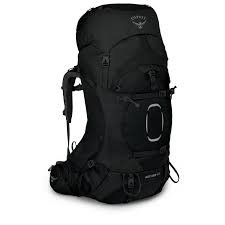
When your adventure involves multiple days on the trail, carrying everything you need to survive, you need a serious load-hauler. The Osprey Aether 65 is a legendary pack in the backpacking community, renowned for its ability to make heavy loads feel manageable and its toughness in harsh environments.
This isn’t a carry-on; this is a dedicated backcountry machine. The main body is made from high-tenacity nylon, ready for scrapes against rocks and branches. The true magic is in the suspension system. The custom-moldable hipbelt and adjustable harness create a perfect fit for your body, transferring the pack’s weight from your shoulders to your hips.
It’s loaded with trail-specific features: a massive main compartment with multiple access points, a floating top lid that converts into a daypack for summit pushes (on newer models), Stow-on-the-Go trekking pole attachments, and a large front “shove-it” pocket for a rain shell. For multi-day treks, this pack is an absolute workhorse.
- Best For: Multi-day hiking, backpacking trips, any adventure where you need to carry a lot of gear comfortably.
- Capacity: 65L (part of the Aether/Ariel family with various capacities).
- Pros: Exceptional comfort with heavy loads, highly adjustable fit, durable construction, feature-rich for trekking.
- Cons: Too large and complex for general travel, overkill for short trips.
7. The Sustainable Survivor: Cotopaxi Allpa 35L Travel Pack
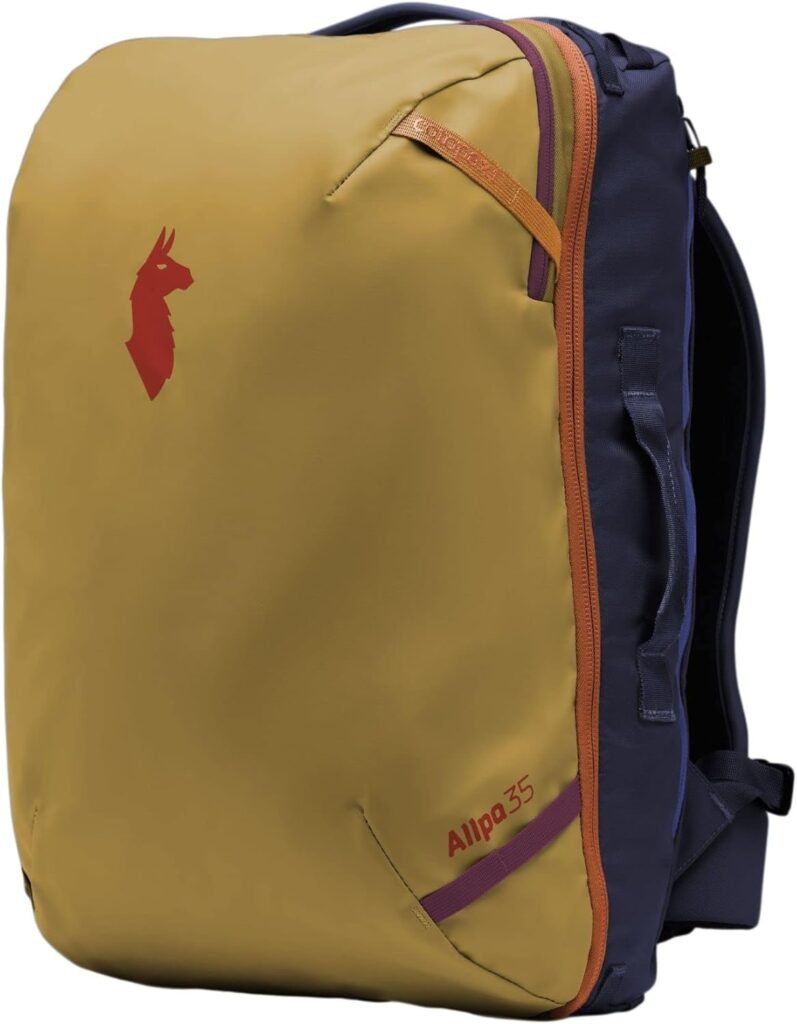
Who says rugged gear can’t have a vibrant soul and a conscience? The Cotopaxi Allpa 35L is proof that you can have a bombproof travel pack that is also ethically and sustainably made. Each pack in their (Re)Purpose collection is a one-of-a-kind creation, using leftover fabric, which means less waste and a unique pack for you.
The Allpa is built from a tough, TPU-coated 1000D polyester, making it highly durable and water-resistant. Its design is brilliantly traveler-focused. Like a suitcase, it features a full-wrap zipper, opening into a main compartment with subdivided mesh sections. This makes organization a visual, intuitive process.
It’s designed to be the perfect one-bag travel companion, meeting carry-on specs for most airlines. The harness system is comfortable and can be completely stowed away, allowing you to carry it like a briefcase or duffel through airports. It also includes a padded laptop sleeve and a quick-access top pocket.
- Best For: The style-conscious and eco-conscious traveler, one-bag world explorers, weekend adventurers.
- Capacity: 35L (also available in 28L and 42L).
- Pros: Suitcase-style packing, durable and water-resistant, carry-on friendly, B Corp certified company.
- Cons: The boxy shape isn’t ideal for long, narrow hikes.
8. The Convertible Crusader: Osprey Farpoint 40

The Osprey Farpoint 40 is arguably one of the most popular travel backpacks on the planet, and for good reason. It perfectly straddles the line between a comfortable hiking pack and a convenient travel suitcase, making it the ultimate convertible crusader for adventurers who do a bit of everything.
Its durability comes from a robust 210D ripstop nylon, strong enough to handle baggage carousels and tuk-tuk rides. Its main strength lies in its harness system, which is surprisingly comfortable for a travel-focused pack, drawing on Osprey’s deep expertise in hiking gear. Crucially, the entire harness and hipbelt can be zipped away behind a panel, transforming it into a sleek duffel bag for check-in or storage.
Large panel access to the main compartment makes for easy packing, while internal and external compression straps cinch down your load to keep things stable and compact. It’s the perfect size for carry-on, yet spacious enough for weeks of travel if you pack smart.
- Best For: Backpackers in Europe or Southeast Asia, hostel-stayers, travelers who want one bag to do it all.
- Capacity: 40L.
- Pros: Excellent stowable harness system, carry-on size, great compression, comfortable to carry.
- Cons: Not as much internal organization as some competitors.
9. The Budget-Friendly Brawler: Kelty Redwing 50
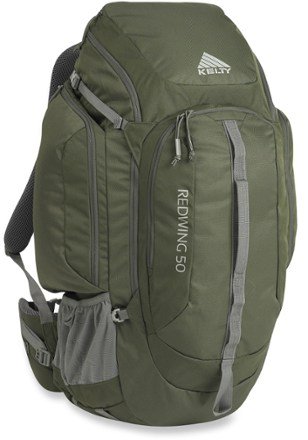
Proving that you don’t have to spend a fortune to get a pack that lasts, the Kelty Redwing 50 has been a staple for budget-conscious adventurers for years. This is a no-frills, get-the-job-done brawler that prioritizes durability and solid fundamentals over fancy features.
The pack is made from a tough Poly 420D Small Back Stafford, which holds up remarkably well to the abuse of the trail and travel. Its hybrid U-zipper design gives you the option of using it as a top-loader or a panel-loader, offering great versatility in how you access your gear.
The suspension system is simple but effective, with an aluminum stay and HDPE frame sheet providing good support for moderate loads. It’s packed with pockets and organization options, making it easy to keep your gear sorted. For the price, you will be hard-pressed to find a more reliable and rugged pack.
- Best For: First-time backpackers, students on a gap year, budget travelers who still need a dependable pack.
- Capacity: 50L.
- Pros: Excellent value for money, durable construction, versatile loading design, great organization.
- Cons: Heavier than more modern packs, suspension is less advanced than premium models.
10. The Family Adventure Fortress: Thule Chasm 90L

Adventures change when a family is involved. Suddenly, you’re not just carrying your own gear, but a mountain of snacks, spare clothes, toys, and emergency supplies. You need a fortress. The Thule Chasm 90L is a cavernous duffel bag that converts into a backpack, built to haul massive amounts of gear and withstand anything a family can throw at it.
The Chasm is made from a weather-resistant tarpaulin fabric with a padded bottom, protecting your gear from both rain and rough ground. The wide-mouth opening makes it incredibly easy to pack and find what you need without unpacking everything. Internal mesh pockets help organize the chaos.
Its killer feature is the convertibility. The duffel straps quickly and easily convert into comfortable backpack straps, letting you haul that 90L load on your back when you need your hands free to hold onto your little adventurers. When not in use, it stuffs into its own carry case for compact storage.
- Best For: Family road trips, ski vacations, camping trips, any adventure requiring a massive amount of gear.
- Capacity: 90L (other sizes available).
- Pros: Huge capacity, extremely durable and weather-resistant, converts to a comfortable backpack, easy to pack.
- Cons: Can become extremely heavy, minimal organization in the main cavern.
Frequently Asked Questions (FAQ) for the Adventurous Traveler
You’ve read about the titans of toughness, but you might still have a few questions before you’re ready to pull the trigger. We get it! A great backpack is a big decision. Here are answers to some of the most common questions we hear from fellow adventurers.
1. What size travel backpack do I actually need?
This is the golden question! The answer depends entirely on your travel style. Here’s a quick guide:
- 20-30 Liters (e.g., GORUCK GR1, AER Travel Pack 3 Small): Perfect for weekend trips, as a secondary daypack, or for hardcore minimalists who travel ultra-light. Great for urban exploration where you don’t need to carry a ton of gear.
- 35-45 Liters (e.g., Cotopaxi Allpa 35L, Osprey Farpoint 40): This is the sweet spot for one-bag travel. It’s generally the largest size that is consistently carry-on compliant and offers enough space for a week or even months of travel if you pack smart.
- 50-65+ Liters (e.g., Kelty Redwing 50, Osprey Aether 65): These are for long-term backpacking or adventures that require specialized gear, like multi-day treks, camping, or cold-weather travel where you need bulkier clothes. These will almost always need to be checked on a flight.
Our advice: Start with a pack in the 35-45L range. It forces you to be intentional about what you pack and gives you the freedom of carry-on travel.
2. What’s the difference between “water-resistant” and “waterproof”?
This is a crucial distinction!
- Water-Resistant: This means the fabric can repel water to a certain degree, usually thanks to a tight weave or a coating like DWR (Durable Water Repellent). It will protect your gear from light rain, mist, or a quick spill. Most of the “weather-warrior” packs like the Patagonia Black Hole fall into this category.
- Waterproof: This means the bag is completely impervious to water, even if submerged (for a specified time and depth). This requires sealed seams (tape or RF welding) and special waterproof zippers. True waterproof backpacks are less common and often less accessible than water-resistant ones.
Do you still need a rain cover? For a highly water-resistant pack, you might not need one for a brief downpour. But for extended exposure to heavy rain, a dedicated rain cover is cheap, lightweight insurance to guarantee your gear stays bone dry.
3. Is a 40L backpack guaranteed to be carry-on size?
Unfortunately, no. While 40-45L is often cited as the “carry-on size,” there is no universal standard. The final decision rests with the airline, and they care more about the bag’s external dimensions (length x width x height) than its volume in liters.
A pack like the Osprey Farpoint 40 is specifically designed to meet the dimensions of most major airlines. However, budget airlines, especially in Europe and Asia, can have stricter requirements.
Pro Tip: Before you fly, always check the carry-on dimension limits for your specific airline. Also, don’t over-stuff your bag! A bulging pack is far more likely to get flagged by gate agents.
4. How do I clean my rugged travel backpack?
After a gritty adventure, your pack deserves a little TLC. NEVER put your backpack in a washing machine or dryer. The machine’s agitation can destroy the fabric’s coatings, tangle the straps, and damage the frame.
Instead, follow these steps:
- Empty Everything: Open all pockets and zippers and shake the bag out to remove loose dirt and crumbs.
- Spot Clean: Use a soft brush (an old toothbrush works great) and a mild, non-detergent soap mixed with lukewarm water to gently scrub any stained areas.
- Full Wash (If Needed): Fill a bathtub or large sink with cool water and the same mild soap. Submerge the pack and swish it around. Use a cloth or soft brush to clean the interior and exterior.
- Rinse Thoroughly: Drain the soapy water and rinse the pack with clean, cool water until all soap residue is gone.
- Air Dry: Hang the backpack upside down in a well-ventilated area out of direct sunlight (UV rays can degrade the fabric over time). Make sure it’s completely dry before storing it to prevent mildew.
5. Why are materials like “1000D Cordura®” so important?
The “D” stands for Denier, which is a measure of the thickness and weight of the fiber. A higher number generally means a thicker, heavier, and more durable fabric.
- Cordura® or Ballistic Nylon: These are brand names for specific types of high-performance nylon fabrics known for their exceptional resistance to abrasion, tearing, and scuffs. A pack made from 1000D Cordura® (like the GORUCK GR1) is fundamentally tougher and will last significantly longer than one made from generic, lower-denier polyester.
- Ripstop: This is a weaving technique that incorporates a thicker reinforcement thread in a crosshatch pattern. This prevents a small tear from spreading and “ripping” across the entire fabric.
Paying a bit more for these premium materials is an investment in longevity. It’s the difference between a pack that lasts one trip and a pack that lasts a lifetime.
6. Do I really need a hip belt on my travel backpack?
If your packed bag weighs more than 15-20 lbs (about 7-9 kg), the answer is a resounding YES.
A simple shoulder strap system puts 100% of the bag’s weight on your shoulders and upper back. This quickly leads to fatigue, soreness, and an unhappy traveler. A good hip belt is designed to transfer 60-80% of the pack’s weight off your shoulders and onto your hips—the strongest part of your body’s core structure.
Even on smaller travel packs, a simple webbing hip belt can add a lot of stability and prevent the bag from swaying as you walk. For any serious travel or trekking, a padded, load-bearing hip belt is a non-negotiable feature for comfort and endurance.
Your Adventure Awaits—Gear Up Accordingly
An investment in a high-quality, rugged travel backpack is an investment in your peace of mind and the quality of your travels. It’s the foundation upon which great adventures are built. The packs on this list are more than just bags; they are trusted tools, engineered to perform when it matters most.
Stop letting gear anxiety hold you back. Stop worrying about what might break and start dreaming about where you’ll go. Whether you’re a minimalist urbanite, a backcountry trekker, or a globe-trotting photographer, there is an unbreakable companion out there waiting for you.
Your next great adventure is calling. Don’t answer it with a flimsy excuse for a backpack. Explore the options we’ve laid out, find the one that resonates with your adventurous soul, and get out there. The world is waiting. What are you waiting for? Subscribe to MindGearMen.

